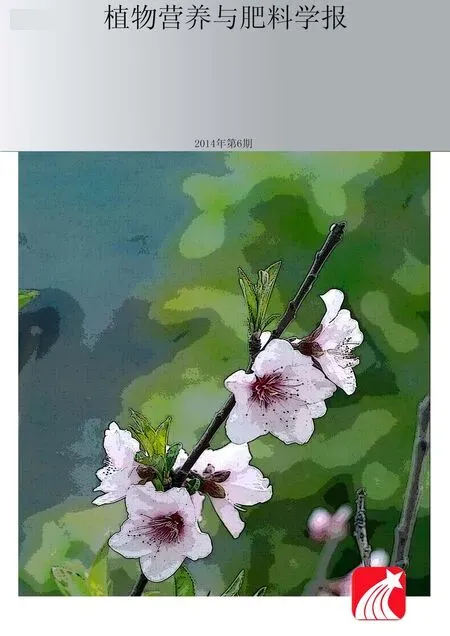二氧化碳联合螯合剂强化向日葵修复铜污染土壤研究
武慧斌, 于志红, 周 宋正国*
(1 农业部环境保护科研监测所生态毒理与环境修复研究中心, 天津 300191;2 农业部环境保护科研监测所科技管理处, 天津 300191)
工业污泥和垃圾农用、 污水农灌、 大气中的污染物沉降、 含重金属矿质肥料和农药长期施用于农田等活动正日益增加土壤中重金属的累积。在我国,土壤遭受重金属污染面较广,已成为不容忽视的重要环境问题[1-3]。其中,重金属铜的污染尤为严重[4-7]。以江西德兴铜矿区为例,该地区某些地段因采矿和冶炼活动引起的农田污染面积达数千亩,人和畜禽中毒事件时有发生[8]。
作为绿色植物光合作用所必需的原料之一,CO2增加对植物光合作用是有利的。CO2浓度升高一般能增加正常环境中植物的生物量和产量[9-14];CO2能提高植物对水分的利用效率从而强化植物的光合作用;CO2浓度升高还可使植物根系更发达,改善植物根际微生态系统及其分泌物,更有利于提高土壤养分的生物可利用性,提高植物对养分的利用效率[15-21]。
螯合诱导生物修复技术是指施用螯合剂或配位基来诱导或强化植物对金属的富集作用。螯合诱导技术实际上是植物修复和化学技术的综合应用,向土壤中施加螯合剂(EDTA、 DTPA、 EGTA、 柠檬酸、 草酸等)能活化土壤中的重金属,促进植物吸收[22-23]。螯合剂与土壤溶液中的重金属离子结合,降低土壤液相中的金属离子浓度。为维持液、 固相之间的离子平衡,重金属从土壤颗粒表面解吸,由不溶态转化为可溶态,同时螯合剂本身又减少了土壤对重金属-螯合剂复合体的吸持强度,从而增加了土壤溶液中重金属的浓度,提高了植物提取修复效率[23-29]。
已有研究证实,CO2浓度升高会增加印度芥菜和向日葵抗铜胁迫能力,并诱导这两种植物超积累铜[30-31],这是一种普遍现象还是个别现象?是一种有利于植物修复效率提高的正效应还是不利于植物修复效率改善的负效应?迄今为止,将植物因二氧化碳浓度升高引起的上述变化与植物修复的效率联系起来的文献报道较少。因此,本研究以向日葵为研究材料,筛选出对CO2浓度升高响应显著的品种,探讨其修复铜污染土壤的效率;对比研究CO2与螯合剂联合诱导下向日葵对铜污染土壤修复效率的差异,以期为利用植物修复铜污染土壤提供数据支撑。
1 材料与方法
1.1 供试土壤
本试验供试土壤为棕壤,采自沈阳农业大学后山试验田0—20 cm无污染耕层。土壤主要理化性质为pH 5.53、 CEC 17.24 cmol/kg、 有机质33.0 g/kg、 全铜13.37 mg/kg、 粘粒含量17.96%;具体测定方法参见土壤农化分析方法[32]。盆栽用的所有土壤均过2 mm筛。
1.2 供试作物
选用在我国西北地区种植面积大、 在东北地区亦有种植的5个向日葵品种,分别为食葵3号、 食葵4号、 阿尔泰1号、 阿尔泰2号、 油生引2号。其中,食葵3号与食葵4号为食用品种;阿尔泰1号、 阿尔泰2号与油生引2号为油用品种。
1.3 试验设计



1.3.2 螯合剂加入量确定试验 螯合剂EDTA和DPTA的浓度分别为1、 3、 5、 7、 9 mmol/kg(pH值7.0)。称20 g铜污染棕壤(铜总量为200 mg/kg)于250 mL的锥形三角瓶中,加100 mL螯合剂,在振荡机振荡2 h(200 r/min),静置后过滤,原子吸收光谱仪(Jena, Zeenit 700, Germany)测定上清液中Cu浓度。
1.4 植株样品分析
将向日葵的茎与叶分开收获。向日葵的茎与叶先用自来水冲洗干净,然后用去离子水淋洗3次。植株控水后,放入烘箱,于85℃杀青15 min,然后在70℃下烘48 h,取出,分别称重。烘干后的茎与叶用不锈钢研磨仪(IKA-11)研碎,充分混匀后,称取0.800 g于100 mL高型烧杯中,加几滴水润湿后,加入12.5 mL混合酸(HNO3∶HClO4=4 ∶1)190℃下消煮至溶液近干。消煮液用去离子水定容至50 mL容量瓶。同时消煮空白与标准样品进行质量控制与结果校正。消煮和测量过程均以生物成分分析标准物质GSB-7茶叶(CRM Tea from IGGE, GBW10016)和Cu标准品(Fluka, Switaerland)进行质量控制。消煮液中铜用原子吸收光谱仪(Jena, Zeenit 700, Germany)测定。
1.5 数据处理
所有试验数据采用Microsoft Excel 2007、 Origin 8.0和SPSS 16.0统计软件进行统计分析。
2 结果与分析
2.1 螯合剂加入量的确定
不同螯合剂用量对污染棕壤中铜的浸提效果显著不同(图1)。其中,EDTA浸提浓度为5 mmol/kg时,土壤浸出液铜含量最高,为81.74 mg/kg, 与EDTA浸提浓度为3、 7 mmol/kg时并无显著差异(P<0.05)(图1a)。由于EDTA对植物生长具有一定的毒性,加入土壤的EDTA含量越多,毒性越大。因此,本试验选用EDTA 3 mmol/kg 土作为土壤铜的活化浓度。DTPA浸提浓度为5 mmol/kg时,土壤浸出液铜含量最高,为70.04 mg/kg(图1b)。 因此,本试验选用DTPA浓度为5 mmol/kg 土作为土壤铜的活化浓度。
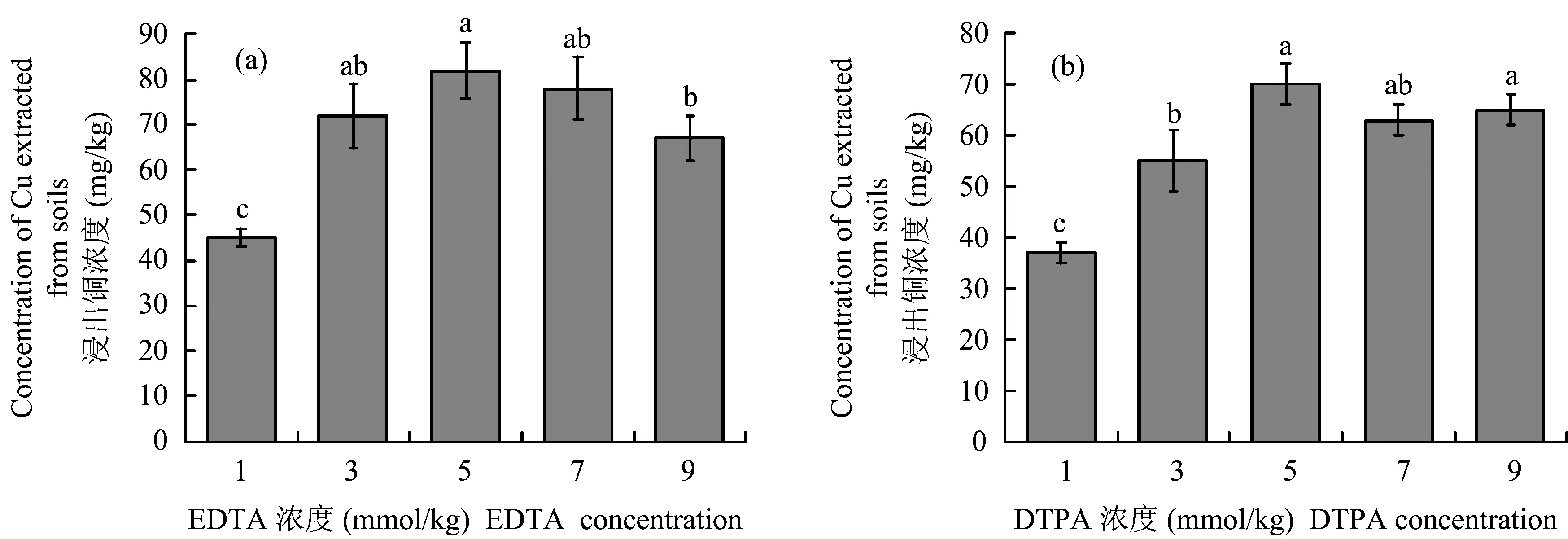
图1 不同浓度螯合剂的浸提效果Fig. 1 Leaching effect of different concentrations of chelating agents
2.2 二氧化碳与螯合剂联合施用下向日葵的生物量
将EDTA、 DTPA加入到铜污染土壤后,无论CO2施用与否,由于螯合剂作用时间较短,对向日葵地上部生物量并没有明显影响(表1)。螯合剂施用2 d后,向日葵明显出现中毒现象。具体表现为叶片有失绿斑点出现,叶片有轻微的失水现象。CO2浓度升高情况下,向日葵的失绿、 失水现象较轻。显示二氧化碳可能有增强向日葵抗性的作用,但二氧化碳如何影响向日葵对螯合剂反应的机制还有待研究。
EDTA处理下,与正常CO2浓度比较,高CO2处理时的食葵3号、 阿尔泰2号、 油生引2号的总生物量显著增加(P<0.05);食葵4号和阿尔泰1号的总生物量略有降低。DTPA处理下,高CO2浓度处理的食葵3号,阿尔泰2号的总生物量显著增加(P<0.05);食葵4号、 阿尔泰1号、 油生引2号的总生物量有所降低。不同螯合剂处理对向日葵生物量的影响不大,一方面与不同品种向日葵对EDTA、 DTPA螯合剂耐性的强弱有关,另一方面可能与螯合剂施入土壤中时间较短有关[27]。
2.3 二氧化碳与螯合剂联合施用下土壤pH值


表1 二氧化碳与螯合剂联合施用下向日葵的生物量(g/plant)
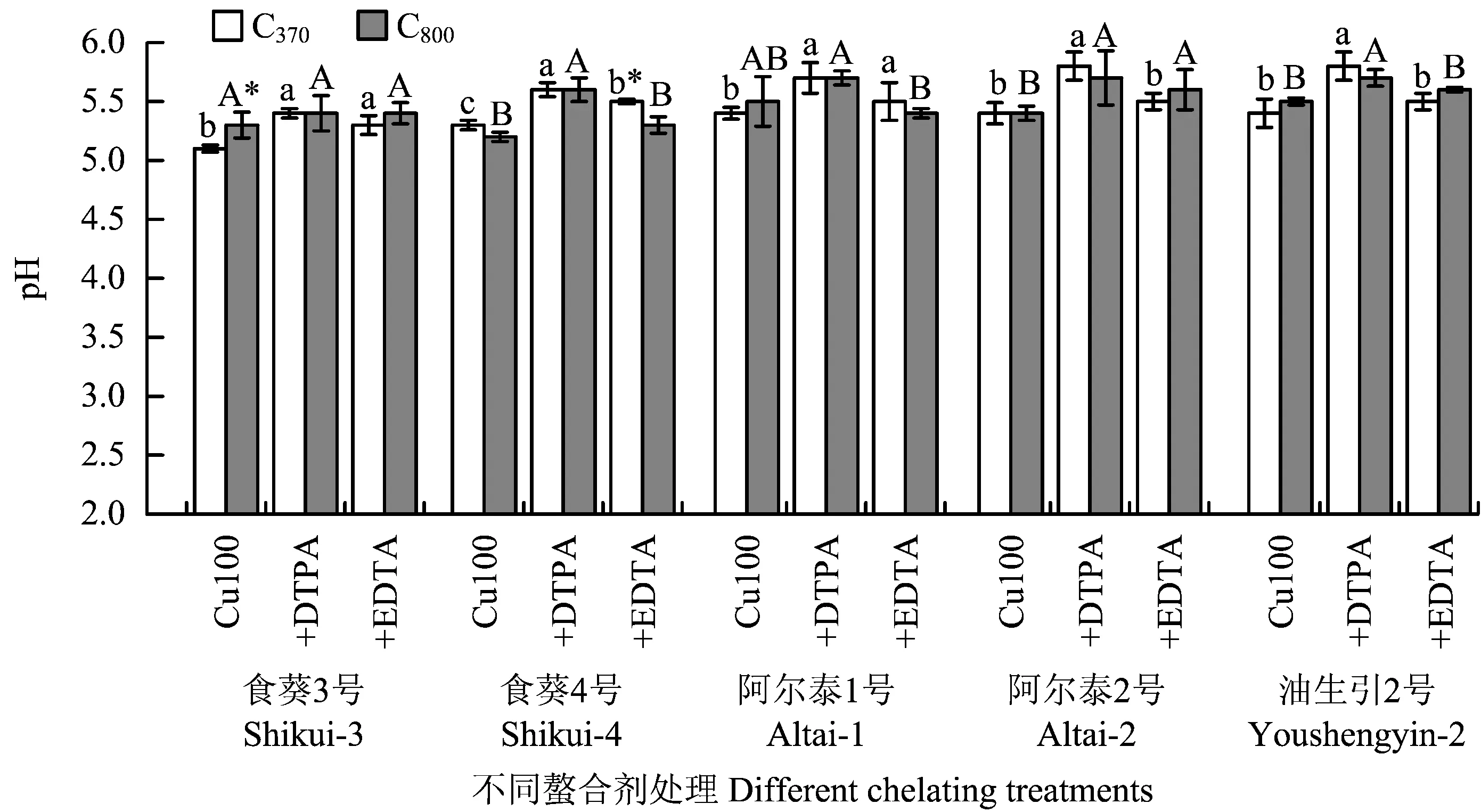
图2 二氧化碳与螯合剂联合施用下土壤的pH值Fig.2 pH values under the joint action of CO2 and chelating agent
2.4 二氧化碳与螯合剂联合施用下向日葵铜含量和蓄积量

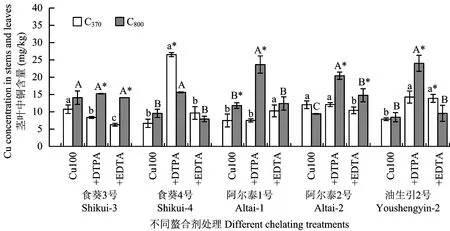
图3 二氧化碳与螯合剂联合施用下向日葵茎叶中铜含量Fig. 3 Cu concentrations in stems and leaves of sunflower under the joint action of CO2 and chelating agent

汪楠楠等[33]研究表明,土壤中有效态铜的含量在柠檬酸和EDTA浓度均为5 mmol/L时(浓度处理均为0、 2.5、 5、 7.5、 10 mmol/L)达到峰值。吊兰地上部对铜的富集在柠檬酸5 mmol/L时最大,EDTA为5 mmol/L时,吊兰地下部对铜的富集量最大。Seth等[36]指出,在水培条件下,利用EDTA修复铅污染,向日葵地上部蓄积铅的量增加了80%以上。Kos等[37]的研究也表明,应用EDTA促进了铅、 镉、 锌在大麻、 紫花苜蓿、 玉米、 高粱、 大麦中的积累。本研究结果与前人的研究结果基本一致。单施螯合剂明显增加向日葵地上部铜的蓄积量,并且在CO2联合螯合剂后,向日葵地上部蓄积铜的效果较单施螯合剂效果更明显。植物对铜的吸收不仅取决于土壤中有效态铜的含量[27],土壤环境的其他因素,如温度、 pH值、 CEC、 溶解性有机质和离子交互作用、 通气性等也一定程度上影响植物对重金属的吸收[35]。螯合剂进入土壤,通过自身的配位体和土壤中的重金属离子结合成金属螯合物,改变了重金属在土壤中的存在形态,以此改变土壤中液相和固相之间的平衡,进而促进重金属从土壤颗粒表面解吸,提高对重金属的吸收率和生物有效性[26]。土壤有效态的变化能够直接反映螯合剂对重金属的活化效果,这意味着螯合剂的施用,促进了土壤重金属可交换态和碳酸盐结合态的析出,促进植物对重金属的吸收。同时由于CO2的联合作用,可能进一步促进了植物地上部对重金属的吸收和积累[13, 27, 30, 31, 38]。
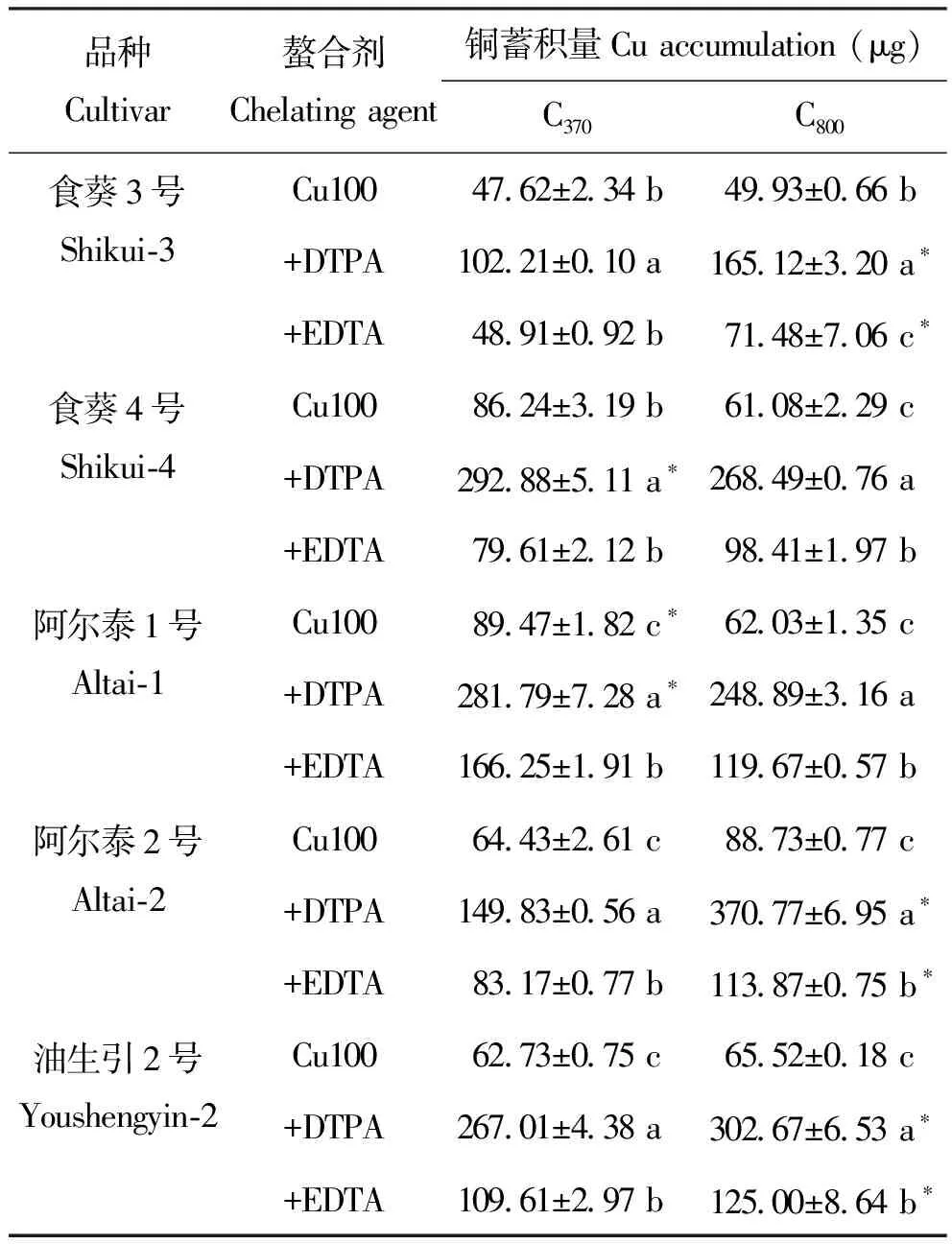
表2 二氧化碳与螯合剂联合施用下向日葵铜蓄积量
3 结论
1)食葵4号、 阿尔泰1号这两个品种对CO2浓度升高的反应并不敏感;食葵3号、 油生引2号对二氧化碳浓度升高反应中等;阿尔泰2号对CO2浓度升高的反应最为敏感。

3)在铜污染水平为100 mg/kg的土壤上,与浓度为3 mmol/kg 土的EDTA相比,5 mmol/kg 土的DTPA与800 μmol/mol二氧化碳联合施用的修复效果更好。
参考文献:
[1] 曾希柏, 苏世鸣, 马世铭, 等. 我国农田生态系统重金属的循环与调控[J]. 应用生态学报, 2010, 21(9):2418-2426.
Zeng X B, Su S M, Ma S Metal. Heavy metals cycling and its regulation in Chinese cropland ecosystems[J]. Chinese Journal of Applied Ecology, 2010, 21(9):2418-2426.
[2] 李梦红. 污泥农用后土壤中重金属对小麦和玉米品质的影响及评价[J]. 作物杂志, 2010, (5):26-29.
Li M H. Effect and evaluation of heavy metals in soil on quality of wheat and maize after sludge was applied to soil[J]. Crops, 2010, (5):26-29.
[3] 邹继颖, 刘辉, 祝惠, 等. 重金属汞镉污染对水稻生长发育的影响[J]. 土壤与作物, 2012, 1(4):227-232.
Zou J Y, Liu H, Zhu Hetal. Effects of mercury and cadmium pollution on rice growth and development[J]. Soil and Crop, 2012, 1(4):227-232.
[4] 林爱军, 王凤花, 谢文娟, 等. 土壤铜污染对植物的毒性研究进展[J]. 安徽农业科学, 2011, 39(35):21740-21742, 21847.
Lin A J, Wang F H, Xie W Jetal. A review of phytotoxicity of soil contaminated with copper[J]. Journal of Anhui Agricultural Sciences, 2011, 39(35):21740-21742, 21847.
[5] 陈贵英, 李维, 陈顺德, 等. 环境铜污染影响及修复的研究现状综述[J]. 绿色科技, 2011, (12):125-128.
Chen G Y, Li W, Chen S Detal. Research advances of the effects of environmental copper pollution and bioremediation of Cu-contaminated soil[J]. Journal of Green Science and Technology, 2011, (12):125-128.
[6] 荆林晓, 成杰民, 于光金. 土壤铜污染的影响因素及其修复技术研究[J]. 环境科学与管理, 2008, 33(10):47-49.
Jing L X, Cheng J M, Yu G J. Research on the influence factors of copper contamination on soil and its remediation technology[J]. Environmental Science and Management, 2008, 33(10):47-49.
[7] 刘军, 谢吉民, 初亚飞, 等. 土壤中铜污染研究进展[J]. 安徽农业科学, 2008, 36(17):7423-7424, 7470.
Liu J, Xie J M, Chu Y Fetal. Research aAdvances in copper pollution in soil[J]. Journal of Anhui Agricultural Sciences, 2008, 36(17):7423-7424, 7470.
[8] 黄长干, 邱业先. 江西德兴铜矿铜污染状况调查及植物修复研究[J]. 土壤通报, 2005, 36(6):991-992.
Huang C G, Qiu Y X. Pollution of the environment in Jiangxi Dexing copper mine by copper and phytoremediation[J]. Chinese Journal of Soil Science, 2005, 36(6):991-992.
[9] Smith A R, Lukac M, Hood Retal. Elevated CO2enrichment induces a differential biomass response in a mixed species temperate forest plantation[J]. New Phytologist, 2013, 198(1):156-168.
[10] Madan P, Jagadish S V, Craufurd P Qetal. Effect of elevated CO2and high temperature on seed-set and grain quality of rice[J]. Journal of Experimental Botany, 2012, 63(10):3843-3852.
[11] Jia Y, Ju X, Liao Setal. Phytochelatin synthesis in response to elevated CO2under cadmium stress inLoliumperenneL.[J].Journal of Plant Physiology, 2011, 168(15):1723-1728.
[12] Tang S, Liao S, Guo Jetal. Growth and cesium uptake responses ofPhytolaccaamericanaL. andAmaranthuscruentusL. grown on cesium contaminated soil to elevated CO2or inoculation with a plant growth promoting rhizobacteriumBurkholderiasp. D54, or in combination[J].Journal of Hazardous Materials, 2011, 198:188-197.
[13] Wu H, Tang S, Zhang Xetal. Using elevated CO2to increase the biomass of aSorghumvulgarexSorghumvulgarevar.sudanensehybrid andTrifoliumpratenseL. and to trigger hyperaccumulation of cesium[J].Journal of Hazardous Materials, 2009, 170(2-3):861-870.
[14] De Souza A P, Gaspar M, Da S Eetal. Elevated CO2increases photosynthesis, biomass and productivity, and modifies gene expression in sugarcane[J].Plant, Cell and Environment, 2008, 31(8):1116-1127.
[15] Biswas D K, Xu H, Li Y Getal. Modification of photosynthesis and growth responses to elevated CO2by ozone in two cultivars of winter wheat with different years of release[J].Journal of Experimental Botany, 2013, 64(6):1485-1496.
[16] Noormets A, Kull O, Sober Aetal. Elevated CO2response of photosynthesis depends on ozone concentration in aspen[J].Environmental Pollution, 2010, 158(4):992-999.
[17] Alonso A, Perez P, Martinez-Carrasco R. Growth in elevated CO2enhances temperature response of photosynthesis in wheat[J]. Physiology Plant, 2009, 135(2):109-120.
[18] Yasuhiro Y, Masahiko S, Masumi O, Kazuhiko K. Nutrient uptake by rice and soil solution composition under atmospheric CO2enrichment[J]. Plant and Soil, 2004, 259:367-372.
[19] Uga Y, Sugimoto K, Ogawa Setal. Control of root system architecture by deeper rooting increases rice yield under drought conditions[J]. Nature Genetics, 2013, 45(9):1097-1102.
[20] Nie M, Lu M, Bell Jetal. Altered root traits due to elevated CO2:a meta-analysis[J].Global Ecology and Biogeography, 2013, 22:1095-1105.
[21] Taylor B N, Beidler K V, Cooper E Retal. Sampling volume in root studies:the pitfalls of under-sampling exposed using accumulation curves[J].Ecology Letters, 2013, 16:862-869.
[22] 白薇扬, 赵清华, 谭怀琴. 非生物螯合剂EDTA与生物螯合剂EDDS联合施用提高植物提取土壤重金属效应的研究[J]. 重庆理工大学学报(自然科学版), 2013, 27(8):47-53, 61.
Bai W Y, Zhao Q H, Tan H Q. Effects of EDTA、 EDDS on phytoextract in artificially polluted soil with heavy metals[J].Journal of Chongqing University of Technology (Natural Science Edition), 2013, 27(8):47-53, 61.
[23] Souza L A, Piotto F A, Nogueirol R Cetal. Use of non-hyperaccumulator plant species for the phytoextraction of heavy metals using chelating agents[J]. Scientia Agricola, 2013, 70(4):290-295.
[24] Mohamed M A, Efligenir A, Husson Jetal. Extraction of heavy metals from a contaminated soil by reusing chelating agent solutions[J]. Journal of Environmental Chemical Engineering, 2013, 1(3):363-368.
[25] Oh M, Moon S Y, Oh Setal. Removal of As and heavy metals (Cd, Cu and Pb) in fine soil from soil washing process using chelating agent[J].Journal of Earth Science and Engineering, 2012, 2:596-601.
[26] 胡亚虎, 魏树和, 周启星, 等. 螯合剂在重金属污染土壤植物修复中的应用研究进展[J]. 农业环境科学学报, 2010, 29(11):2055-2063.
Hu Y H, Wei S H, Zhou Q Xetal. Application of chelator in phytoremediation of heavy metals contaminated soils:a review[J].Journal of Agro-Environment Science, 2010, 29(11):2055-2063.
[27] 熊国焕, 潘义宏, 何艳明, 等. 螯合剂对大叶井口边草Pb, Cd, As 吸收性影响研究[J]. 土壤, 2012, 44(2):282-289.
Xiong G H, Pan Y H, He Y Metal. Chelate assisted uptake of heavy metal lead, cadmium and arsenic from soil withPteriscreticavar. nervosa[J]. Soils, 2012, 44(2):282-289.
[28] 张譞, 李晔, 胡进, 等. 三种螯合剂对土壤重金属Cd和Zn形态变化的研究[J]. 科学技术与工程, 2013, 13(21):6184-6188.
Zhang X, Li Y, Hu Jetal. Effects of three chelates on the form distribution of Cd and Zn in soil[J].Science Technology and Engineering, 2013, 13(21):6184-6188.
[29] 郑雪玲, 朱琨. 螯合剂在植物修复重金属污染土壤中的应用[J]. 环境科学与管理, 2009, 34(8):106-109.
Zheng X L, Zhu K. The application of chelating agents in the phytoremdiation of heavy metal contaminated soils[J].Environmental Science and Management, 2009, 34(8):106-109.
[30] Tang S, Xi L, Zheng Jetal. Response to elevated CO2of indian mustard and sunflower growing on copper contaminated soil[J].Bulletin of Environmental Contamination and Toxicology, 2003, 71(5):988-997.
[31] Zheng J, Wang H, Li Zetal. Using elevated carbon dioxide to enhance copper accumulation inPteridiumrevolutum, a copper-tolerant plant, under experimental conditions[J].International Journal of Phytoremediation, 2008, 10(2):159-170.
[32] 鲁如坤. 土壤农业化学分析方法[M]. 北京:中国农业科技出版社, 2000.
Lu R S. Analysis method of soil and agro-chemistry[M]. Beijing:China Agricultural Scientech Press, 2000.
[33] 汪楠楠, 胡珊, 吴丹, 等. 柠檬酸和EDTA对铜污染土壤环境中吊兰生长的影响[J]. 生态学报, 2013, 33(2):631-639.
Wang N N, Hu S, Wu Detal. Effects of citric acid and EDTA on growth ofChlorophytumcomosumin copper-contaminated soil[J]. Acta Ecologica Sinica, 2013, 33(2):631-639.
[34] Lindsay W, Norvell W A. Development of a DTPA soil test for zinc, iron, manganese, and copper[J].Soil Science Society of America Journal, 1978, 42(3):421-428.
[35] 胡忻, 罗璐瑕, 陈逸珺. 生物可降解的螯合剂EDDS提取城市污泥中Cu,Zn,Pb和Cd[J]. 环境科学研究, 2007, 20(6):110-114.
Hu X, Luo L X, Chen Y J. Extraction of Cu, Zn, Pb and Cd in municipal sludges using a biodegradable chelating agent [S, S] stereoisomer of ethylenediamine disuccinate[J].Research of Environmental Sciences, 2007, 20(6):110-114.
[36] Seth C, Misra V, Singh R Retal. EDTA-enhanced lead phytoremediation in sunflower (HelianthusannuusL.) hydroponic culture[J]. Plant and Soil, 2011, 347(1-2):231-242.
[37] Kos B, Greman H, Lestan D. Phytoextraction of lead, zinc and cadmium from soil by selected plants[J].Plant Soil and Environment, 2003, 49(12):548-553.
[38] Li Z, Tang S, Deng Xetal. Contrasting effects of elevated CO2on Cu and Cd uptake by different rice varieties grown on contaminated soils with two levels of metals:implication for phytoextraction and food safety[J]. Journal of Hazardous Materials, 2010, 177(1-3):352-361.

